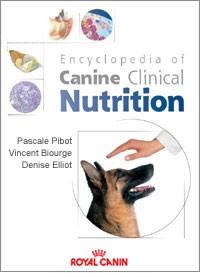
Get access to all handy features included in the IVIS website
- Get unlimited access to books, proceedings and journals.
- Get access to a global catalogue of meetings, on-site and online courses, webinars and educational videos.
- Bookmark your favorite articles in My Library for future reading.
- Save future meetings and courses in My Calendar and My e-Learning.
- Ask authors questions and read what others have to say.
Diagnostic Evaluation
Get access to all handy features included in the IVIS website
- Get unlimited access to books, proceedings and journals.
- Get access to a global catalogue of meetings, on-site and online courses, webinars and educational videos.
- Bookmark your favorite articles in My Library for future reading.
- Save future meetings and courses in My Calendar and My e-Learning.
- Ask authors questions and read what others have to say.
Read
5. Diagnostic Evaluation
A thorough initial evaluation including complete blood count (CBC), biochemical profile, urine analysis, urine culture and blood pressure measurement is indicated to plan the appropriate conservative management. Abdominal radiographs and or abdominal ultrasound will complement the initial laboratory data base.
Laboratory findings consistent with renal failure include azotemia (increase in BUN, creatinine), hyperphosphatemia, mild to severe metabolic acidosis, hypo or hyperkalemia, hypo or hypercalcemia, anemia, hyperlipidemia, bleeding tendencies, isothenuria, proteinuria and hypertension (Table 4). These biological signs are not necessarily present in a single dog.
Table 4. Laboratory Findings in CRF |
|
Azotemia
The identification of azotemia requires delineation of pre-renal azotemia, pre-renal azotemia complicating chronic renal failure, acute renal failure, acute renal failure complicating chronic renal failure, post renal azotemia and post renal azotemia complicating chronic renal failure from uncomplicated chronic end-stage renal disease. Each of these disparate azotemic conditions may appear clinically quite similar, but rapid identification is required to formulate a therapeutic plan and guide prognosis (Figure 7).
Figure 7. Consequences of renal disease and its progression to uremic syndrome (Grauer & Allen, 1981). The diagnosis of chronic renal failure is relatively straightforward. It is, however, more difficult to identify early renal disease prior to the development of clinical signs or laboratory abnormalities.
Proteinuria
Dogs with CRF may or may not have proteinuria. Urine strip or stick tests used to screen for proteinuria detect mainly albumin (lower limit of detection ~50 mg/L) and not globulin. False positive results can occur if samples are very alkaline or contaminated by quaternary ammonium compounds.
2+ proteinuria represents a more substantial protein loss if urine is dilute (USG 1.010) than if it is 4 times more concentrated (USG 1.040) (Figure 8). The same principle lies behind use of urine protein to creatinine ratio (UPCR) to evaluate severity of proteinuria.
Figure 8. Interpretation of proteinuria based on urinary density. (©J-C Meauxsoone).
Sustained, severe proteinuria (typically 3 or 4+) strongly suggests glomerular damage, but only if hematuria and urinogenital inflammation are excluded by the absence of erythrocytes and leukocytes in urine sediment. If glomerular protein loss is suspected, proteinuria should be confirmed using the semiquantitative sulphosalicylic acid turbidometric test, which is simple enough to do in the practice laboratory, or urine protein should be quantified by a more precise method in an external laboratory. Not all proteinurias are pathological and pathological proteinurias can arise from non-renal lesions, so caution is advisable before attributing proteinuria to renal disease.
The semi quantitative results from dipstick tests must also be compared with the urinary concentration. (© J-C Meauxsoone).
Microalbuminuria
Microalbuminuria (i.e. urine albumin concentration < 1 mg/dL) has been suggested to be an early indicator of renal disease. However, recent studies have suggested that 56% of dogs that are microalbuminuric have systemic inflammatory, infectious or neoplastic disease. Therefore, the specificity of microalbuminuria for the diagnosis of early renal disease is not fully known.
Glomerular Filtration Rate
The best indicator of renal function is the glomerular filtration rate (GFR). GFR is assessed by calculating the clearance of a solute by the kidney. Urinary inulin clearance is considered the gold standard reference method for measuring GFR. Unfortunately the technique of inulin clearance is labor intensive and best utilized in a research setting. The plasma exogenous creatinine clearance test (PECCT) involves a single injection of creatinine with timed plasma samples to detect plasma clearance of creatinine (Figure 9). The test has been validated in the dog and provides a clinically useful tool to assess renal function (Watson & al., 2002).
Figure 9. Principle of plasma clearance.
Get access to all handy features included in the IVIS website
- Get unlimited access to books, proceedings and journals.
- Get access to a global catalogue of meetings, on-site and online courses, webinars and educational videos.
- Bookmark your favorite articles in My Library for future reading.
- Save future meetings and courses in My Calendar and My e-Learning.
- Ask authors questions and read what others have to say.
1. Adams LG. Phosphorus, protein and kidney disease. Proceeding of the Petfood Forum 1995 (13-26).
2. Bauer JE, Markwell PJ, Rawlings JM et al. Effects of dietary fat and polyunsaturated fatty acids in dogs with naturally developing chronic renal failure. J Am Vet Med Assoc 1999; 215: 1588-1591.
About
How to reference this publication (Harvard system)?
Affiliation of the authors at the time of publication
1Royal Canin USA, MO, USA. 2Experimental Physiopathology and Toxicology, National Veterinary School of Toulouse, Toulouse, France.



Comments (0)
Ask the author
0 comments